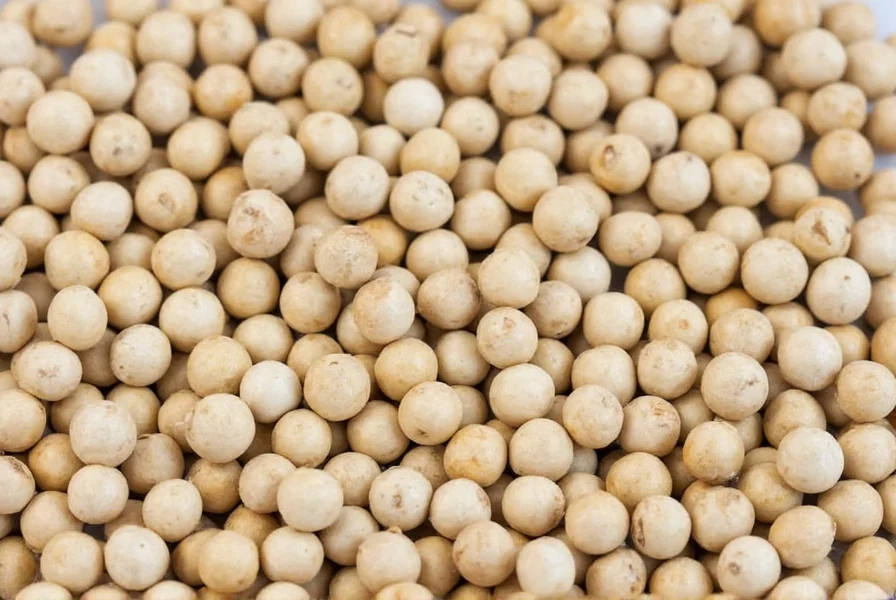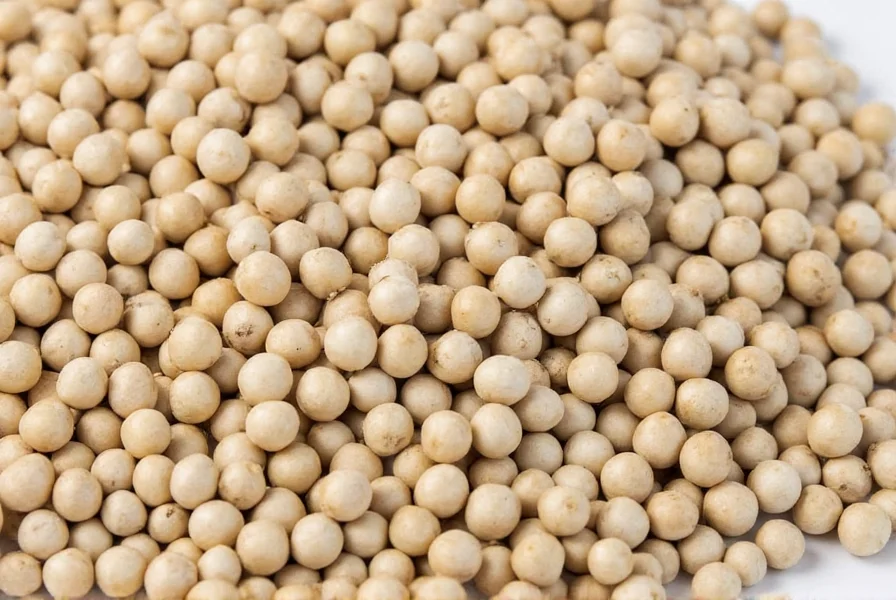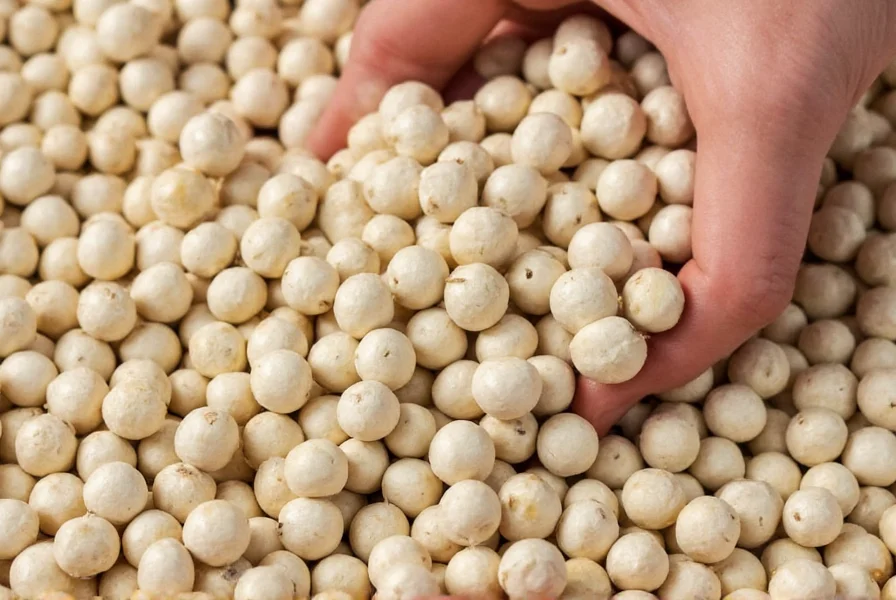White peppercorns in their whole form represent one of the four primary peppercorn varieties (alongside black, green, and pink), each with distinct processing methods and flavor profiles. Unlike black peppercorns, which are dried with their outer skin intact, white peppercorns undergo a fermentation process where ripe red peppercorn berries are soaked in water for about a week. This soaking softens and removes the dark outer layer, leaving behind the pale inner seed that becomes the white peppercorn.
What Exactly Are Whole White Peppercorns?
Scientifically classified as Piper nigrum, white peppercorns originate from the same vine as black peppercorns. The difference lies entirely in the processing method. While black peppercorns are picked unripe and sun-dried with their outer skin, white peppercorns come from fully ripe berries that have undergone retting—a process where they're submerged in water to loosen the outer fruit layer.
This traditional method, particularly prominent in Vietnamese and Chinese pepper production, creates a spice with a cleaner, more focused pepper flavor that lacks the complex top notes found in black pepper. The resulting whole white peppercorns maintain their integrity until ground, preserving their delicate flavor compounds longer than pre-ground alternatives.
Flavor Profile: White vs Black Peppercorns
Understanding the differences between white and black peppercorns is essential for proper culinary application. Consider these key distinctions:
| Characteristic | Whole White Peppercorns | Whole Black Peppercorns |
|---|---|---|
| Processing Method | Ripe berries soaked to remove outer layer | Unripe berries sun-dried with skin intact |
| Flavor Profile | Milder, earthier, less complex | Sharper, more complex, piney notes |
| Heat Level | Moderate (3,000-4,000 SHU) | Higher (3,500-4,500 SHU) |
| Best Culinary Uses | Light-colored sauces, mashed potatoes, cream soups | Most general cooking, meat rubs, dark sauces |
| Visual Impact | No dark specks | Visible black flecks |
The unique white peppercorns flavor profile makes them particularly valuable in French and Chinese cuisines, where appearance matters as much as taste. In béchamel sauces, potato salads, or fish dishes, white pepper provides the familiar peppery warmth without the visual distraction of black specks.
Culinary Applications for Whole White Peppercorns
Professional chefs prize whole white peppercorns for specific applications where their distinctive qualities shine. The best way to use whole white peppercorns in cooking involves understanding when their subtle characteristics enhance rather than dominate a dish.
For traditional French sauces like béchamel or velouté, whole white peppercorns added during the simmering process infuse a gentle heat that complements dairy without overwhelming it. Similarly, in Chinese cuisine, particularly in delicate dishes like hot and sour soup or white cut chicken, white pepper provides necessary warmth while maintaining visual purity.
When creating spice blends or pickling solutions, whole white peppercorns offer consistent flavor release without the bitterness that can sometimes accompany overused black pepper. Their milder nature makes them ideal for dishes featuring subtle ingredients like seafood, chicken, or mild cheeses where black pepper might prove too assertive.

Proper Storage Techniques for Maximum Freshness
To preserve the delicate flavor of whole white peppercorns, proper storage is crucial. Unlike pre-ground pepper, whole peppercorns maintain their potency significantly longer when stored correctly.
The best way to store whole white peppercorns involves keeping them in an airtight container away from light, heat, and moisture. A dark glass jar with a tight-sealing lid in a cool pantry maintains optimal freshness for up to 3-4 years. Avoid plastic containers, which can impart flavors, and never store near the stove or oven where temperature fluctuations degrade quality.
For extended storage, consider dividing your supply into smaller containers. Each time you open the main container, moisture and oxygen enter, accelerating flavor degradation. By using smaller portions as needed, you preserve the majority of your supply in optimal condition.
Grinding and Preparation Tips
When preparing to use whole white peppercorns, proper grinding technique affects both flavor and texture. Unlike black peppercorns, white peppercorns have a slightly softer structure due to the removal of the outer layer, requiring different handling.
For the freshest flavor, grind white peppercorns immediately before use. A dedicated pepper mill set to a medium-coarse setting produces optimal results—too fine and the delicate flavor compounds dissipate quickly, too coarse and the texture becomes unpleasant in delicate dishes. Some chefs prefer mortar and pestle for complete control over texture, especially when making spice pastes.
When substituting white pepper for black in recipes, use about 25% less white pepper initially, then adjust to taste. The flavor profile differs significantly, and direct 1:1 substitution often results in over-seasoning.

When to Choose White Over Black Peppercorns
Understanding when to use white pepper instead of black separates novice cooks from experienced ones. While personal preference plays a role, certain culinary situations clearly benefit from white pepper's unique properties.
Choose whole white peppercorns when:
- Preparing light-colored sauces, soups, or purees where black specks would be visually disruptive
- Cooking delicate seafood or poultry dishes that might be overwhelmed by black pepper's sharper notes
- Following traditional recipes from French or Chinese culinary traditions that specifically call for white pepper
- Creating dishes for special occasions where visual presentation is paramount
- Accommodating diners who find black pepper too harsh or pungent
Conversely, black peppercorns generally work better for meat rubs, hearty stews, dark sauces, and most general cooking applications where visual appearance isn't a primary concern.
Selecting Quality Whole White Peppercorns
Not all white peppercorns deliver the same quality. When purchasing, look for these indicators of premium product:
- Uniform pale beige to light tan color (avoid yellowed or darkened peppercorns)
- Firm, plump berries that feel substantial when squeezed
- Distinctive clean, slightly floral aroma when crushed
- Origin information (Vietnamese and Chinese white peppercorns are generally considered highest quality)
- Whole, unbroken berries (avoid products with excessive dust or fragments)
Reputable spice merchants often indicate the harvest year, as fresher peppercorns deliver significantly better flavor. White peppercorns more than two years old tend to lose their distinctive floral notes, becoming increasingly one-dimensional.
Common Substitutions and Limitations
While substituting white pepper for black pepper works in many situations, understanding the limitations prevents culinary missteps. In most cases, you can substitute white pepper for black at a 3:4 ratio (use 3 parts white for every 4 parts black called for), but the reverse substitution requires more careful adjustment.
White pepper lacks the complex top notes of black pepper, so in dishes where pepper is a featured flavor (like steak au poivre), black pepper remains irreplaceable. However, for background seasoning in light-colored dishes, white pepper often proves superior.
When white peppercorns aren't available, a combination of black pepper and a pinch of coriander seed (which shares some of white pepper's floral notes) can approximate the flavor profile in a pinch, though the visual benefit is lost.
Frequently Asked Questions
What's the difference between whole white peppercorns and black peppercorns?
Whole white peppercorns come from fully ripe peppercorn berries that have been soaked to remove the dark outer layer, leaving just the pale inner seed. Black peppercorns are made from unripe berries dried with their skin intact. This processing difference creates distinct flavor profiles: white pepper offers a milder, earthier taste with subtle floral notes, while black pepper has sharper, more complex flavors with piney top notes.
Can I substitute whole white peppercorns for black peppercorns in recipes?
Yes, but with adjustments. Use about 25% less white pepper when substituting for black, as white pepper has a different flavor profile despite similar heat levels. White pepper works best in light-colored dishes where black specks would be undesirable, but it lacks the complex top notes of black pepper, making it less suitable for dishes where pepper is a featured flavor like steak au poivre.
How should I store whole white peppercorns to maintain freshness?
Store whole white peppercorns in an airtight glass container away from light, heat, and moisture. A dark cupboard or pantry works well. Properly stored, they maintain optimal flavor for 3-4 years. Avoid plastic containers and never store near heat sources like stoves. For longest freshness, divide large quantities into smaller containers to minimize exposure to air and moisture each time you use them.
Why do some recipes specifically call for white pepper instead of black?
Recipes specify white pepper primarily for visual reasons in light-colored dishes like béchamel sauces, mashed potatoes, or fish preparations where black specks would be undesirable. Certain culinary traditions, particularly French and Chinese cuisines, also rely on white pepper's milder, earthier flavor profile that complements delicate ingredients without overwhelming them. Some people with sensitivities to black pepper's stronger compounds also prefer white pepper.
Do whole white peppercorns have the same health benefits as black peppercorns?
Whole white peppercorns contain piperine, the compound responsible for many of pepper's health benefits, though in slightly lower concentrations than black peppercorns. Both varieties offer similar digestive benefits and may enhance nutrient absorption. The processing method affects some phytochemicals, but the core health benefits remain comparable. As with all spices, benefits are best realized when consumed as part of a balanced diet rather than as a supplement.











 浙公网安备
33010002000092号
浙公网安备
33010002000092号 浙B2-20120091-4
浙B2-20120091-4